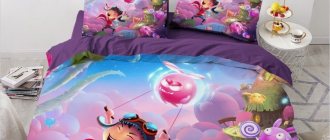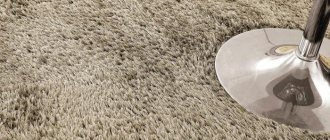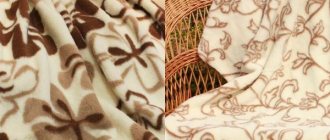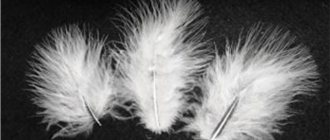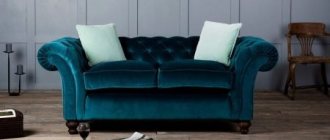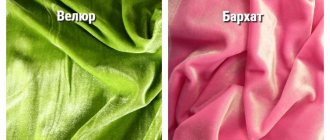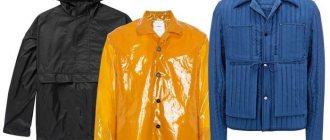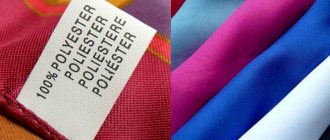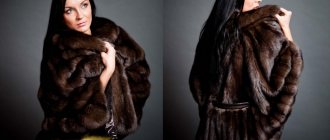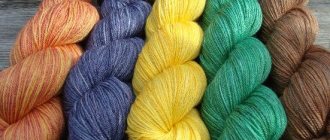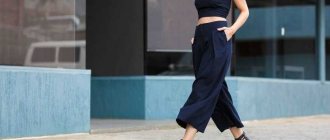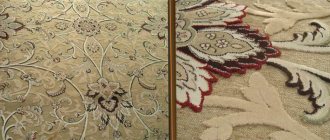What are the differences between polyester and acrylic? If we compare the mechanical properties of acrylic fibers with polyester fibers, they are slightly inferior. Products made from acrylic wrinkle easily and are also easy to iron. However, the structure of the material itself is soft and avoids the formation of strong folds. Additionally, a significant difference between polyester and acrylic is their production process.
Solvents are used for polymer fibers, thereby extruding and weaving polyester fibers. In the acrylic production process, the fibers are first melted and then spun.
What is the difference between acrylic and polyester
These fabrics have slight differences:
- Fiber composition.
- Scope of application.
Fabric making
Acrylic is made from polyacrylonitrile fibers. Thanks to which it is characterized by high strength, light resistance, and heat resistance. They have low thermal conductivity and look like wool. Therefore, first of all, fabric is used as a substitute.
Polyester is made from polyester, which is characterized by low shrinkage, elasticity, and low thermal conductivity. It is called artificial cotton. The material is durable, wear-resistant and does not wrinkle much.
Scope of application
Progress is moving forward. New fabrics are appearing in stores, which contain natural and synthetic fibers. Therefore, it is rare to find 100% acrylic or 100% polyester. Blended fabrics are stronger and more durable. Fabric manufacturers choose these materials.
On a note
To answer the question: which is better, polyester or acrylic, you should be guided by exactly what the fabric is needed for.
Using the table, you will become familiar with the use of polyester and acrylic, their pros and cons, and what fabrics they are mixed with.
| Scope of use | Additional fabric | Characteristics | |
| Polyester | Bed sheets | Cotton | Does not roll down, has increased strength. Dries quickly, does not shrink, does not stretch. Poor air permeability. |
| Lining, upholstery fabric | Cotton, linen, silk | Does not wrinkle, does not absorb moisture and heat. Doesn't stretch. Retains its original condition for a long time. Cleans well. | |
| Insulation materials (isosoft, thinsulate, polyfiber and others) | Made only from polyester | Retains heat well even in severe frosts. Does not change shape after washing. | |
| Women's and thermal underwear | Polyamide | UV resistant and does not change shape when worn. Sticks to the body and does not allow moisture to pass through. | |
| Sportswear, tights, gloves. | Elastane | It stretches well, does not form pills, and does not allow air or moisture to pass through. | |
| Casual wear | Viscose | Does not fade, washes easily, many colors. Things are cozy and pleasant. | |
| Outerwear, umbrellas | Cotton | Resistant to stains and does not allow water to pass through. | |
| Acrylic | Home textiles (plaids, bedspreads) | Cotton | You can make any design, it’s light and doesn’t lose color. Causes static electricity. |
| Stuffed Toys | Cotton | Hypoallergenic, soft, pleasant to the touch. | |
| Knitted products | Wool, cotton | Retains heat, is airtight and pills. | |
| Upholstery of furniture, car seats | 100% acrylic | Wear resistance, resistance to fading and dirt, a large selection of colors, melts. | |
| Curtains | Linen, cotton | Does not fade, durable, drapes well. |
Application in clothing
Acrylic allows you to create many types of weaving and knitting, which makes the possibilities of application endless.
- Warm and comfortable clothing for adults and children;
- Stylish sweaters and pullovers, scarves and hats;
- Home textiles, rugs, rugs, bedspreads, curtains and decor;
- Soft children's toys;
- Upholstery and furniture covers with special reinforcing threads;
- Yarn for embroidery, needlework and hand knitting;
- Sportswear and socks for active workouts and long hikes.
Thanks to its availability, cheapness and durability, acrylic has found unexpected use in the advertising field. It is included in the composition of canvases for banners, banners, and street signs. They are resistant to bad weather, wind and rain and successfully replace paper products.
Curtains made of acrylic fabric are decorative, strong and durable. They drape beautifully, so they are often found in lambrequins. Such curtains do not fade even on the sunny side.
Acrylic has gained wide popularity; manufacturers everywhere use the material for various purposes. The strength of the fabric makes it possible to use it for the manufacture of tents, upholstery for car interiors, furniture, carpets, and curtains.
We suggest you familiarize yourself with what to make storage boxes from
What is the difference between natural, artificial and synthetic fabrics?
Many people mistakenly believe that artificial and synthetic fabrics are the same thing. Meanwhile, such matter has different origins and composition. In the first case, we are talking about a material obtained artificially from natural raw materials (proteins, metals, glass, cellulose). In the production of synthetic fibers, compounds are used that were obtained through chemical synthesis and are not found in nature (compounds of carbon, hydrogen, nitrogen).
Acrylic fabric
Natural fabrics are made exclusively from natural raw materials without the use of chemicals. Modern industry has reached such a high level that often artificial and synthetic materials are many times superior to natural ones in terms of performance and aesthetic qualities. Despite this, it is still customary to separate artificial and synthetic fibers from natural fibers when classifying certain products.
A little about the materials themselves
Features of acrylic:
- It is a synthetic material made from natural gas processing.
- In appearance, acrylic is slightly similar to wool, it is just as soft and flexible, and retains heat quite well.
- The disadvantage of the material is the inability to allow air to pass through.
- After washing, the fabric loses its elasticity.
- After some time, acrylic stretches.
- Acrylic fibers are not resistant to high levels of air humidity.
- The material cannot be washed at temperatures above +400C.
- Acrylic fabric should not be wrung out.
Compound
Polyacrylic. What kind of fabric? It is impossible to answer this question unambiguously. In the modern world, most materials contain it. Acrylic fibers are added to wool, mohair, cotton, angora, coat fabric, etc. The percentage can fluctuate and be completely different. Some fabrics will be 95 percent acrylic, others only five.
No matter how much clothing manufacturers talk about 100% wool or cotton, in most cases their products contain polyacrylic. What kind of fabric can have a long service life and at the same time retain its original appearance over many years of wear? There is simply no such thing. All modern cotton, mohair or wool items have these qualities thanks to the addition of polyacrylic.
Acrylic
It is also polyacrylonitrile,
PAN (volumetric)
,
cashmilon, nitron, orlon, dralon, polyacrly, acrylic, acrylique, acrilik...
The structure is similar to wool and is cheap to produce. This is what made acrylic so popular.
pros
- Painted in any colors and shades, does not fade from sunlight
- Lightweight compared to wool
- Resistant to humidity, high temperatures, acids, alkalis
- Doesn't hurt
- Dries quickly
- Relatively cheap
Minuses
- Not hygroscopic
- Frays (acrylic socks are a bad idea)
- It peels and the pellets are difficult to remove (bulk acrylic rolls off to a lesser extent)
- Electrified
Having absorbed only 1.5% of moisture relative to its own weight, acrylic already becomes wet to the touch. For comparison, under normal conditions wool (a good hygroscopic material) contains 15-17% moisture. In conditions of high humidity, the percentage of water can reach 40% without a significant change in consumer qualities. This is precisely why even slightly damp wool warms well.
@nata_navicula #knittingscience
Polyacrylic
Polyacrylic was initially called “wool-like synthetics” for the similar properties of fluffy crimped synthetically produced fibers to those of natural wool.
Polyacrylic, which has similar heat-retaining characteristics, differs from wool fibers in its inertness to stains, excellent dyeability and the ability to maintain the brightness of shades during prolonged exposure to the sun.
Therefore, synthetic fiber, originally produced exclusively as an alternative to warm wool, is now modified and produced many times with different characteristics. Smooth and durable, it can be the basis of curtains and curtains, decorations for cornices, and furniture fabric.
Beaded curtains made using polyacrylic fittings are often used - in the interior of a room for a teenage girl or intended for decorating a youth cafe.
Polyacrylic yarn can be easily dyed, and its color fastness makes it possible to use the fibers in multi-color textiles (such as jacquard bedspreads).
Synthetics are just as soft and light, similar to wool in feel and appearance, and thanks to the voluminous structure of fluffy threads, they are able to retain heat, which determines the use of polyacrylic in the production of knitted fabrics and fabrics intended for sewing outerwear.
The production of mixed textiles (made from dissimilar fibers) containing even a small percentage of synthetics in the composition is significantly reduced in cost. In addition, valuable properties are imparted to the material - textiles become more resistant to light weather and acquire greater strength.
Polyacrylic
Polyacrylic is also characterized by resistance to prolonged exposure to high temperatures, is not subject to biological destruction in a humid environment, and is easily painted over, maintaining the brightness of the shade for as long as possible.
Due to the fiber's resistance to many chemicals, polyacrylic-based fabric is easy to dry clean and is not damaged by moths.
Polyacrylic buy in Moscow
The material is resistant to microorganisms, does not fade under intense ultraviolet exposure, and maintains dimensional stability for a long time, which determines the durability of synthetic textiles.
Among the disadvantages of fibers of this kind, one should note the tendency to form pills, the ability to accumulate static electricity and low hygroscopicity. The latter feature can be partially compensated for when producing loose-knit knitted fabric.
Tapestry bedspread
Embroidery tapestry
Tapestry paintings
There are actually many possibilities for transforming the usual, boring interior design into an unusual, innovative, fresh one.
The motley variety of colorful jacquard bedspreads (made of wool, polyacrylic) will add a special, playful original flavor to an interior that is neutral in color.
You can diversify the severity of the lines with curtains made of beads in the interior of a laconic high-tech style. Replace the curtain rod with the selected curtains and curtains, and complete the set with curtain holders and clips.
Polyester based coatings
Polyester
- the most economical type of coating, the basis of which is polyester paint and primer with a total thickness of 25 microns. The surface of the polyester coating is glossy, it copes well with negative atmospheric conditions and resists ultraviolet radiation. The disadvantage of this coating option is its low resistance to mechanical loads, so the use of polyester-coated products in a polluted external environment is not recommended. This type of coating is very often used in private construction and roofing work. Today, the color range allows you to choose the most optimal color and shade, and metal with such a coating will last from 10 to 30 years. This is an affordable option for those who value price-quality ratio. The technical characteristics of this coating are regulated and fixed by GOST 52146-2003, as well as for foreign manufacturers JIS G 3312, EN 10169-1-2003, EN10346-2009.
Agneta MP.
This type of coating has a very long service life of 35-40 years, which is ensured by applying paint to the metal on both sides. On the front side of the product the nominal layer is 30 microns, and on the back side it is 25 microns, the zinc layer is 275 g/m2. The coating contains microparticles that promote copper coloring of the coating. The Agneta coating has very good technical characteristics and physical properties.
Resistance to sunlight, fading, and ultraviolet radiation is only part of the advantages of the Agneta coating. The Swedish concern AkzoNobe, which produces coatings for metal tiles and corrugated sheets, provides a 25-year guarantee.
Viking (Viking) MP.
The main difference between the Viking coating and conventional polyester is its matte texture, which performs a number of functions not only in creating an aesthetic appearance, but also protects the roof from ultraviolet radiation, and is also very resistant to mechanical damage. The Viking coating is a new Swedish development, which has a number of differences from the polyester coating. The increased coating thickness of 35 microns is achieved thanks to the special polymer composition F670. Thanks to a minimum gloss content of only 5%, even in clear weather, bright sun rays will not create glare on the roof. The Viking coating, in comparison with conventional polyester, has superior functional qualities and can be used for 15-20 years.
Velur20 (Velour) GL.
One of the many coatings for galvanized steel products is the Velor polymer coating. The basis of this coating is an improved (modified) textured polyester, which provides resistance to reverse impact, a high degree of protection against cracks and scratches. The coating has a thickness of 35 microns. Metal tiles coated with Velur are also not afraid of color loss, fading or other exposure to direct sunlight, since the color saturation is maintained during long-term use. The manufacturer's warranty is 20 years, but in practice this period increases to 20 -35. Bold architectural solutions can be realized thanks to the deep colors and rich colors of the Velur coating.
Features of polyester fibers:
Polyester fibers are the basis for polyester. This fabric practically does not wrinkle, does not lose the richness of its color palette from exposure to sunlight, is highly durable and wear-resistant, and is not afraid of organic solvents. The disadvantages include the ability to become electrified. In addition, polyester products are difficult to dye, so if you decide to dye a T-shirt or trousers, you will have to look hard for a quality dye. It will be easier to simply change the shade of the material than to repaint it a different color.
However, recently they are trying in every possible way to eliminate the shortcomings of synthetic fabrics. Polyester is the most common material not only in the clothing industry, but also in the furniture industry.
Polyacrylonitrile fibers
Polyacrylonitrile fibers Nitron (in the USSR), Orlon (DuPont), Dralon (Dralon GmbH) are obtained from polyacrylonitrile or from copolymers of acrylonitrile with other vinyl monomers (methacrylate, vinyl acetate, etc.). Fibers are formed from a solution using a dry or wet method. Nitron is mainly produced in the form of staple fiber.
Polyacrylonitrile fibers have fairly high strength (breaking stress 250–400 MPa), which can be increased with additional stretching, and relatively high elongation (22–35%). Due to low hygroscopicity, these properties do not change when wet.
Nitron fibers have maximum light resistance. Under conditions of combined exposure, sunlight, smoke, soot, water, acids, etc., in which hydrated cellulose fibers are completely destroyed, polyacrylonitrile fibers lose strength by only 15%. These fibers are also characterized by high heat resistance: during prolonged exposure at a temperature of 120-130 ° C, they practically do not change their properties.
The disadvantages of polyacrylonitrile fibers include their low hygroscopicity, relatively high rigidity and low abrasion resistance.
Nitron fibers have a wool-like appearance, low thermal conductivity, the indicators of which are close to the thermal conductivity of wool. They are inert to pollutants, so products made from them are easy to clean. Nitron fibers are used mainly as wool substitutes in the production of carpets, artificial fur, as a thermal insulation material and as an additive to wool fibers.
To change the properties of fibers, various modification methods are used, in particular the synthesis of copolymers, the synthesis of graft copolymers, and molding from a mixture of polymers. As a result of the modification, dyeability improves, hydrophilicity, elasticity of the fibers, and their resistance to abrasion and repeated deformation increase.
Polyester
Aka polyester, PE, PES, PL
Polyester is most often found in plush type yarn.
Its properties are ideal for toys
pros
- Durable (it is most often strung with sequins and woven with lurex)
- Relatively resistant to abrasion
- Few wrinkles
- Does not peel
- Depending on the processing, it can look like cotton, wool or silk.
Minuses
- Not hygroscopic
- Electrified
- Destroyed by chlorine and ultraviolet rays
What to knit?
Most often, acrylic yarn is recommended for knitting children's clothes - it is soft and hypoallergenic. In addition, acrylic eliminates the problem of lint getting into the child's nose and eyes (as is the case with wool and mohair), and thus does not cause redness and itching.
Acrylic yarn is very popular in making amigurumi-style knitted toys. You can find out what these toys are, as well as how to knit a cute teddy bear according to the pattern, from our article. “Acrylic” toys can withstand the “onslaught” of even the most energetic child: they are durable and hold their shape well. When a toy gets dirty, all mom needs to do is wash it in the evening, and in the morning it’s as good as new.
Acrylic yarn is ideal for knitting women's accessories: bags, mitts, leg warmers, slippers, decorative belts and more. It makes wonderful decorative bedspreads for furniture.
Monolithic polycarbonate
One of the biggest differences between acrylic and polycarbonate is cost. A sheet of monolithic polycarbonate can cost on average 35% more than acrylic glass.
Monolithic polycarbonate UV-resistant, silver, 6 mm, 2050x3050 mm
few
464.00 BYN /sheet
More details
Monolithic polycarbonate UV-resistant milky, 4mm, 2050x3050 mm
few
310.00 BYN /sheet
More details
Monolithic polycarbonate UV-resistant tinted, 3mm, 2050x3050 mm
we will order for you
232.00 BYN /sheet
More details
Monolithic polycarbonate has the following characteristics:
- 250 times more impact resistant than glass and 30 times stronger than acrylic;
- There are bulletproof versions of the material;
- light transmittance 88%;
- resistant to chips and cracks, very high notch impact strength coefficient - more than 30 kg/sq. m (for plexiglass 2.8 30 kg/sq. m);
- thermoplastic with a minimum operating temperature of -100°C;
- low level of flammability;
- high resistance to acids and other chemicals such as gasoline;
- sheets can be drilled without fear of cracking;
- tinted versions of the material.
Now that you've quickly become familiar with the main differences between acrylic and polycarbonate, let's look at why each material has its own distinctive properties and what opportunities it offers. Obviously, the place to start is by looking at the chemical structure and raw materials that make up these polymers.
PVC and Polyethylene Plastic Films
What material to choose for floor vapor barrier
Flexible plastic film made of PVC or polyethylene is relatively short-lived and not as dense as polycarbonate. Sometimes it is used for no more than one season, but most coatings can still last two seasons. It is susceptible to destruction under the influence of ultraviolet rays.
Purchasing commercial grades of PVC, which are designed specifically for the construction of greenhouses, will preserve their properties longer than grades of PVC for technical needs. However, it is better to attach the film only to a metal frame.
A little brightening is also another minus. Thanks to them, the temperature in the greenhouse rises by a small number of degrees. The advantage of polyethylene film is its high light transmittance, ease of installation and low cost.
Properties of PVC products:
- unified structure;
- smoothness;
- do not allow moisture to pass through;
- resistant to corrosion and chemicals;
- resistance to temperature changes;
- safety;
- ease;
- have high light fastness.
Polypropylene
Many types of polymers, including polycarbonate and polypropylene, are used quite often in various industries. The possibility of obtaining a wide variety of synthetic materials based on polypropylene, the environmental friendliness of the resulting products and objects, the availability of their disposal and processing leads to the fact that this material is displacing polyvinyl chloride, impact-resistant polystyrene and ABS plastics from the plastics market. Polypropylene is sometimes called the “king” of plastics.
Properties of polypropylene products:
- high impact and mechanical strength;
- resistance to abrasion and bending;
- resistance to environmental influences;
- high chemical resistance;
- low hygroscopicity and water permeability;
- good weldability;
- environmental friendliness;
- low electrical conductivity.
All types of polymers have approximately the same characteristics, but polycarbonate is considered the most durable and reliable. It is widely used in construction and agriculture.
Types of sheet plexiglass
Depending on the production technology, as well as on the additives that make up the material, various types of acrylic sheets are produced:
- transparent acrylic sheet with a high degree of light transmission, which does not distort the image;
- transparent colored acrylic, having a uniform color throughout the entire plane. Available in a variety of colors and shades;
- sheet plexiglass of varying degrees of transparency, from partially transparent to completely matte white;
- matte colored organic glass with a wide range of shades;
- corrugated sheets of acrylic, one of the sides of which has a three-dimensional texture. May be white, colored, matte or partially transparent;
Pyrolysis of polyacrylonitrile
Polyacrylonitrile fiber is also a raw material for the production of carbon fiber by oxidative pyrolysis and stabilization in an inert gas. However, this method is poorly justified economically due to the high cost of polyacrylonitrile, and also environmentally due to the release of extremely toxic substances.
The process is carried out in two stages: the first is heating in air at 180-300°. In this case, oxygen is absorbed and at a temperature of ~220 °C the release of water and ammonia and then at ~270 °C - hydrocyanic acid. During this stage of oxidative pyrolysis, intramolecular and intermolecular cyclization occurs; as a result of intramolecular cyclization, sections of the polymer with a ladder structure appear; intermolecular cyclization leads to cross-linking of linear polymer chains with the formation of a black spatially cross-linked polymer, which, unlike the original polyacrylonitrile, is infusible and insoluble .
At the second stage, the cross-linked polymer obtained as a result of oxidative pyrolysis is heated to 1000–2000 °C in an inert gas environment, producing carbon fiber.
Acrylic paint advantages and disadvantages
Acrylic paints and varnishes have the following advantages:
- strength, elasticity, transparency;
- good adhesion;
- coatings with varying degrees of gloss, from glossy to matte surfaces;
- durability is many times higher than oil and alkyd paints;
- weather resistance, light fastness, resistance to ultraviolet radiation;
- easy to grind and polish;
- temperature of use -50…+175 °С;
- washable, resistant to mineral and vegetable oils, grease and gasoline;
- high technology, simplicity and ease of application,
- quick drying: 15...30 minutes at high temperature drying, 1...3 hours at room temperature;
- environmentally friendly, odorless;
- fire safety of water-based and water-soluble paints.
Among the disadvantages are:
- insufficient resistance to solvents;
- acrylic paint does not combine well with other types of film formers;
- loss of properties by water-dispersed materials upon freezing;
- relatively high price.
Types of polymer binders
The following latex dispersions are most in demand today:
- acrylic polyvinyl acetate;
- acrylic silicone;
- acrylic butadiene-styrene;
- acrylic.
According to the area of application, polymer paints are divided into compositions for interior decoration and exterior, or exterior. Substances are added to emulsions intended for facade work to prevent the formation of mold. Polymer dispersions for interior use are divided into acrylic, dripless, dense, textured and vinyl.
https://youtube.com/watch?v=IRl2WDPL8ig
Dripless paints, as the name suggests, do not leave streaks or drips, making them good for use on uneven surfaces and cracks. Acrylics are best suited for painting wood. Textured ones allow you to unleash a creative flight of fancy and create a unique decor in the room. Vinyl polymer coatings are good for walls, and dense ones are good for ceilings.
Polyvinyl acetate
This composition is better known by another name - water-based emulsion. This paint is made from PVA. It does not contain organic solvents and is practically odorless. Its difference is its good adhesion to the surface. But at the same time, until it dries, it is easy to wash off the tools. The low price of this paint made it especially popular.
Against the background of the listed advantages, one cannot ignore the disadvantages:
- The dried mixture is easily washed off, so it is not used for facade work or in places with high humidity.
- If you run your finger over a dry surface painted with water-based emulsion, a white mark will remain on your finger. Therefore, it is better to use it for hard-to-reach places.
- Water emulsion does not tolerate frost well, so it must be used in heated rooms. In most cases, it is better not to use it at dachas.
Butadiene-styrene
The mixture is also known as water-based paint, but has increased wear resistance and can be used in rooms with high humidity. Among the disadvantages, it should be noted that it is susceptible to ultraviolet rays, under the influence of which it quickly fades.
However, it can be successfully used in rooms where there is little sunlight - for example, in bathrooms, storage rooms, corridors. Its price is also quite affordable.
Acrylic silicone
This type of paint has good wear resistance, as well as moisture resistance and resistance to ultraviolet rays. In addition, acrylic silicone paint is vapor permeable. All of the above makes it an indispensable option for painting facades. Moreover, it is often used as a replacement for silicone and silicate paints, since it contains substances that duplicate these mixtures. In addition, acrylic-silicone emulsion is significantly cheaper, which makes it even more attractive to use.
Acrylic latex
Today, this paint is becoming increasingly in demand, despite its high price compared to all other latex polymer mixtures. The fact is that its characteristics are in all respects better than those of mixed polymers.
It turns out that it is more economical to use acrylic paint. It’s just that to get a similar result you need to spend 2-3 times less than cheaper polymer latex mixtures.
The high performance qualities of acrylic polymers make the scope of this paint very wide. It is used in both interior and exterior decoration.
Elastane (lycra)
The material is somewhat similar to rubber, hence its ability to stretch. Elastane is very durable and does not stretch. Items made from 100% elastane are quite rare, unless we are talking about something like superhero costumes or lycra leggings that were in fashion in the 90s. Elastane threads are added to fabric for sewing underwear and any narrow, tight-fitting items.
This material is obtained from natural gas. It is produced in the form of thin or voluminous threads for the manufacture of knitwear and knitted items. All kinds of sweaters, tights, and socks are made from acrylic and with its addition. If you see a rather voluminous but light-weight item in the store, look at how much acrylic it contains.
Nylon is a substitute for natural silk, very light in weight, durable, smooth, and easy to care for. You should not refuse to purchase something made of wool or cashmere if it contains up to 30% nylon - such a thing will only be stronger, but at the same time retain the properties of natural fabric.
Many people unknowingly classify viscose as a synthetic material. In reality, viscose is obtained by processing cellulose, so it has the properties of natural fabrics. Viscose is breathable, pleasant to the touch, and retains heat.
Our dear readers! We spent several days preparing and publishing this material. It only takes a few seconds to share it on Social Networks
Limitless possibilities: fashionable looks
What to wear with a synthetic coat depends on its style and the look you are planning to put together. The abundance of styles and variety of cuts in the line of such outerwear allow imagination to offer the most non-trivial solutions.
Classic gray rarely leaves the catwalks. Sonia Rykiel, Balmain and Roberto Cavalli use it again and again in their latest collections.
Choose a straight or trapezoidal double-breasted coat. Mix it with a black skirt, a classic office skirt or a spacious flared one. Add a little dusty blue or pearl blue for a subtle jumper.
And don't forget about accessories: a neckerchief, bag and shoes that match the color scheme will complete a wonderful street ensemble.
Wear a spacious polyester trench coat or robe coat with jeans. Cropped or tucked loose fit models perfectly complement a casual style set.
Shoes - sneakers, sneakers or soft loafers - will help to emphasize everyday life. And if you want to add a touch of charm to your everyday look, wear a simple, laconic white shirt.
Check out concept clothing stores. Their assortment often includes outerwear made of synthetics.
Following cutting-edge trends, pay attention to things made using the multi-layer technique, especially monochrome. And take a closer look at things with a massive shoulder line - in the coming seasons, voluminous, overweight shoulders will be very popular... Try to play on one of the fashionable colors of the season
Designers Badgley Mishka, Etro, Oscar de la Renta, Alena Akhmadullina suggest wearing pink and blue pastels, delicate “candy” shades, as an illustration of girlish dreams. This coat looks great in a traditional combination with white or gray things. Whether it will be a plain scarf for cool weather, sophisticated white trousers, a flirty lace dress, a strict pencil skirt in mouse or ash color or a snow-white shirt - it’s up to you
Try playing with one of the trendy colors of the season. Designers Badgley Mishka, Etro, Oscar de la Renta, Alena Akhmadullina suggest wearing pink and blue pastels, delicate “candy” shades, as an illustration of girlish dreams. This coat looks great in a traditional combination with white or gray things. Whether it will be a plain scarf for cool weather, sophisticated white trousers, a flirty lace dress, a strict pencil skirt in mouse or ash color or a snow-white shirt is up to you.
Men in black will never go out of style. Combine a black puffed polyester coat with items of the same color.
A combination of textures will give a highlight: if the jumper is matte and the trousers are glossy, for example, leather, the set will turn out to be emphatically stylish and eye-catching.
https://youtube.com/watch?v=yPZZRtKGVvw
Viscose
Many people quite often confuse viscose with silk. Indeed, the goal of manufacturers is to imitate silk fibers in the structure. It is a cellulose fiber that is made by extruding cellulose pulp, which is obtained from wood or cotton.
The process of producing viscose is chemical, but this does not mean at all that you should abandon this material. Wearing viscose clothing is appropriate in the summer, as it creates a pleasant coolness. Unfortunately, the downside is that viscose shrinks when washed at high temperatures and can tear easily. Viscose can be used to make both summer and winter clothes.
About care
Is polyester washable? And how to wash a polyester coat? Of course you can. Just one of the advantages of such clothes is easy care. You just need to follow some rules:
This material, after heating above forty degrees, secures the acquired shape. Therefore, it should be machine washed in water at a temperature lower than the above, otherwise it will be difficult to get rid of the formed wrinkles. However, now there are things made from this fiber that can be washed in sixty-degree water
Always pay attention to the label before washing; You can simply wash it by hand and in the machine, selecting the manual delicate cycle. A quick wash is possible if the item is not too dirty;
It is better to soften the water with Calgon, which will increase the washing capabilities and allow you to save on MS: for “soft” water, less powder will be required.
Polyester fabrics dry very quickly. You don't even need to squeeze them in the machine: just squeeze them a little by hand and straighten them in the dryer.
Such products do not need ironing. However, if this is still necessary, then you can iron it through a dampened “hebash” fabric at a medium-temperature iron setting.
